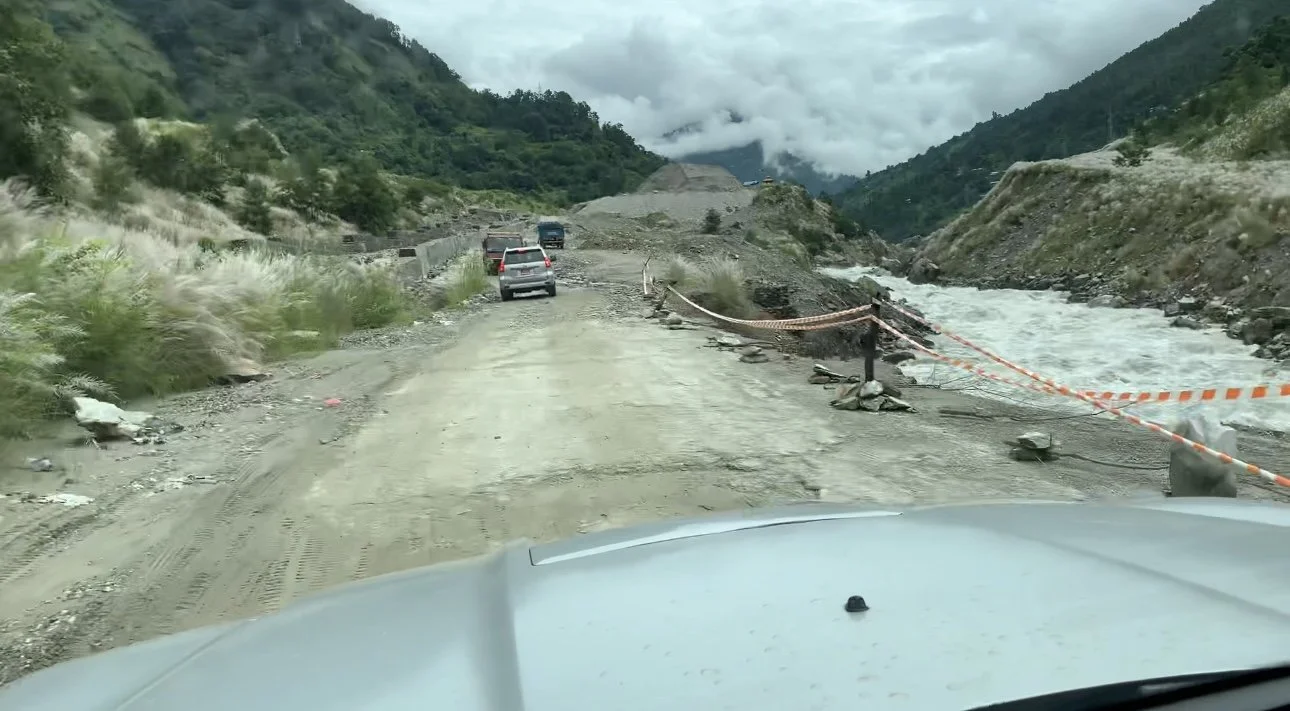the mountain vs. the road
Nepal. 2019.
The drive from Kathmandu to Sindhupalchok takes about 3.5 hours, give or take 3.5 hours. This, according to the Nepali men driving me along the route, is a guessing game. We will see how it goes. I take their word for it and sit back. I’m riding shotgun, so I have a great view for the next few hours. Or so.
When they told me it’s unpredictable how long this trip will take, they forgot to mention why.
I think I just figured it out.
Ahead of us, a huge swath of this so-called highway to China is gone — literally wiped off the map. At first, my car mates don’t understand why I’m confused by what lies ahead and all around us. Then they realize: the American girl has no idea.
So they explain.
The highway was buried by an avalanche back in 2014 with about 20 meters — that’s almost 66 feet — of rock and dirt that fell from the sky. There were 156 deaths, making it the deadliest landslide in Nepal’s history.
But wait. That was 5 years ago.
The driver nods and shrugs his shoulders.
And now, here we are. The devastation is unbelievable. The road is still barely passable. I hold my breath as our SUV driver slowly navigates boulders, ditches, running water and other cars that are perilously close. For miles, we inch along. The men in the truck with me return to laughing and talking over one another in their native Nepali language. I have no idea what they are saying. As they are in their own world, telling stories to pass the time, I am in absolute awe at the surroundings. This doesn’t seem real.
But it is very real.
The mountain has literally fallen into the valley and we are now driving over it.
This is the Araniko Highway in Nepal in September 2019. Photos by Kasey Jackson.
***
“I haven’t been everywhere, but it’s on my list.” ~ Susan Sontag
I cringe to state the obvious here, but travel has changed my life. I admit I am one of the lucky ones. I had a job that allowed me to see things I probably wouldn’t have seen on my own. I have been to places most people only dream of visiting — and some places most people have never even heard of before. I am lucky and fortunate and thankful. I do not take it for granted. I’m privileged.
But I will say it until the day I die: Do what you can to get out and explore. Even if it’s only around your own hometown or state. Get out and have an adventure. Be one with Mother Nature.
***
I chanced upon a documentary the other day on Netflix called “Aftershock: Everest and the Nepal Earthquake.” It’s a three-part series about the devastating earthquake and avalanche in 2015 that killed about 9,000 people in Nepal, including many climbers on Everest. An entire village, Langtang, disappeared under rubble and snow. This documentary reminded me of the devastation I saw in Nepal … and that living in a place surrounded with such breathtaking natural beauty often comes with a price.
So as I have done with all of my trips, I jumped in to do some research. Here’s a little of what I learned about the landslide I passed through:
The disaster took place along the Araniko Highway, which is the only route from Kathmandu to China. The highway passes directly over what is known as a “contact zone” between the Indian plate and the Eurasian plate. This is one of the most active areas of tectonic movement on Earth. This strong tectonic activity weakens the bedrock, leaving it loose and susceptible to landslides. While earthquakes are common here, this particular landslide was not triggered by tectonic action — it was triggered by monsoons.
The landslide created another problem when the debris cut off the Sun Koshi River, forming a lake that submerged a hydropower station. The lake posed a huge flood risk for almost half a million people in two countries and the hydropower station damage led to loss of power for millions.
Mother Nature will always win.
***
I met countless beautiful people on this trip. I learned about high-altitude living and terrace farming. I took part in local cultural activities and shopped for singing bowls and tea in the busy alleys of Kathmandu. It’s important to me to always spend some money with local artists and shop owners during my travels, and Nepal did not disappoint. I also came home with a one-of-a-kind knit poncho and several Dhaka topi, the traditional hat worn in Nepal.
But as always, my favorite souvenirs are my photos and videos. Here are a few that show the magic — and chaos — that is Nepal.






































